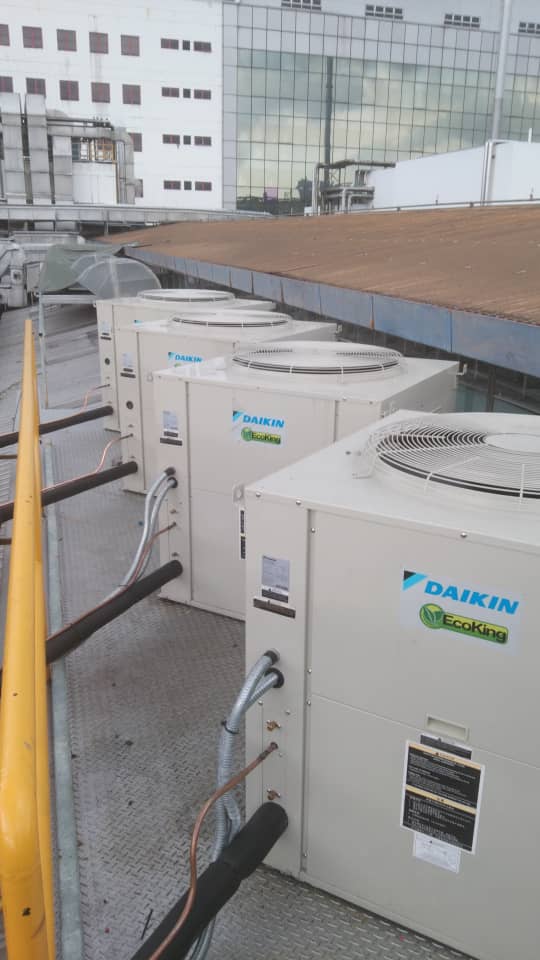Understanding how industrial air conditioning works is essential for maintaining comfort and efficiency in large facilities. This FAQ will break down the key components and processes involved in industrial air conditioning systems.

Understanding Industrial Air Conditioning Systems
Industrial air conditioning systems are specifically designed to manage the temperature and humidity in large buildings. Unlike residential systems, they often cater to different operational requirements, such as extensive spaces, high ceilings, and specialized equipment.
These systems use a combination of cooling and ventilation processes to maintain a comfortable environment. By redistributing air, they also help in controlling indoor humidity levels, which can be crucial for processes and equipment sensitive to moisture.
Typically, industrial air conditioning employs central units that circulate conditioned air through a network of ducts. This ensures that temperature and air quality are consistent throughout the facility, enhancing productivity and comfort for employees.
Key Components of Industrial Air Conditioning
At the heart of industrial air conditioning systems are several key components: the chiller, air handling units, and ductwork. The chiller removes heat from the liquid refrigerant and is essential for cooling the air.
Air handling units (AHUs) work alongside chillers, mixing fresh air with return air from the building before conditioning it. This combination is vital to maintaining balanced airflow and ensuring optimal air quality.
Ductwork acts as the transportation network, guiding conditioned air throughout the facility. Properly designed duct systems are crucial for distributing air evenly while minimizing energy losses.
In addition to these core components, advanced controls and sensors help manage the system's operation efficiently, allowing for real-time adjustments based on occupancy and external weather conditions.
How Refrigeration Cycle Works
The refrigeration cycle is a critical process in industrial air conditioning. It involves the phase transformation of refrigerant to absorb and release heat effectively. The cycle starts when refrigerant is compressed, raising its pressure and temperature.
Once the refrigerant reaches high pressure, it moves to the condenser, where it releases heat to the outside air and condenses into a liquid. This cooled liquid then flows into the expansion valve, dropping in pressure and temperature.
In the evaporator, the low-pressure refrigerant absorbs heat from indoor air, cooling the environment. After that, the cycle repeats. This continuous process is vital for maintaining comfortable conditions in industrial spaces.
Understanding the refrigeration cycle is essential for troubleshooting and optimizing industrial air conditioning systems. Each phase plays a significant role in ensuring efficient cooling and effective energy use.
Importance of Air Quality Control
Air quality control is a fundamental aspect of industrial air conditioning. Maintaining clean, fresh air is not just about comfort; it's crucial for the health and safety of employees, especially in facilities dealing with harmful materials.
Effective air quality control systems filter out contaminants and regulate humidity, which can help prevent issues like mold growth and respiratory problems. Regular maintenance of these filters ensures optimal performance.
Furthermore, monitoring carbon dioxide levels is essential for workplace safety, particularly in densely populated areas. Advanced sensors help track these levels, allowing for timely modifications to the system as needed
.
Maintenance for Optimal Performance
Regular maintenance is key to ensuring that industrial air conditioning systems operate at peak efficiency. Scheduling routine inspections can identify potential issues before they lead to more significant problems, saving both time and money.
Components such as filters, coils, and fans require attention to maintain air quality and equipment longevity. Dirty filters can hinder airflow, while clean coils enhance heat exchange capabilities.
In addition, checking refrigerant levels is vital for the system's efficiency. A refrigerant leak can lead to energy waste and higher operational costs. Regular refrigerant checks and maintenance help mitigate this risk.
Ultimately, investing in maintenance not only extends the life of your industrial air conditioning system but also ensures a safe and productive working environment for everyone.
Wrapping it Up
In summary, industrial air conditioning is a complex system that relies on various components working together to ensure optimal air quality and temperature control. By grasping the fundamentals, facility managers can make informed decisions about their air conditioning needs.







 VN 2943
VN 2943  US 1819
US 1819  MY 598
MY 598  SG 585
SG 585  GB 401
GB 401  HK 323
HK 323  MX 303
MX 303  CA 289
CA 289 



